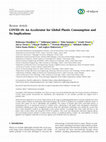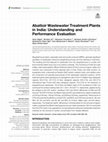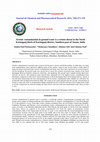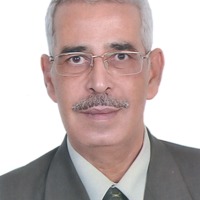Papers by Moharana Choudhury

ABSTRACT The production of Pulp and Paper Industry is generally considered as a heavily polluting... more ABSTRACT The production of Pulp and Paper Industry is generally considered as a heavily polluting Industry, Department of Environment and Forests has been notified 20 highly polluting industries falling within the purview of industrial licensing. The pulp and paper industry is among 20 highly polluting industries in our country. An attempt has been made in this paper to discuss the waste generation during the various stage of pulp and paper manufacture. The present case covers the special reference of effluent treatment process of Cachar Paper Mill to achieve Central Pollution Control Board`s permissible limits .This paper deals with available waste water management approaches of CPM. Apart from generalised areas of treatment process the chemical and biological characteristics of paper mills waste-water and its impact on river has been reported. Key words: Effluent treatment, Waste management, Zero effluent, BOD, COD, Clean technology approach.

Information about the layer wise variation in Municipal Solid Waste (MSW) dumps, their environmen... more Information about the layer wise variation in Municipal Solid Waste (MSW) dumps, their environmental consequences, and leaching dynamics are rather scarce. MSW samples were, therefore, collected from three layers of a 30 year old dumping site at Silchar (India). Significant variations in pH, density, and metal toxicity were evidenced in different layers of the MSW pile. Physical characteristics (grain size, porosity etc) noticeably varied along the depth as substantiated by SEM analysis. FTIR analysis further revealed predominance of amines and alkenes in the deeper layers. NPK availability was found to be 1.5–2 folds lower in the deepest layer (L3) than the upper layers (L1 and L2). However, Pb, Cr, and Cd availability was significantly high in the middle layer (L2). Lab scale leaching experiments showed that metals (Fe, Cu, and Pb), phosphates and sulphates can greatly contaminate the soil and aquatic ecosystems in the long run. Visual MINTEQ model predicted possibilities of time ...

Journal of Environmental and Public Health
Plastic has been ingrained in our society. Repercussions on the usage of nonbiodegradable plastic... more Plastic has been ingrained in our society. Repercussions on the usage of nonbiodegradable plastics and their problems have been recently realized. Despite its detrimental environmental impact, the COVID-19 epidemic has compelled worldwide citizens to increase their plastic use due to affordability and availability. The volume of hospital solid waste, particularly plastics, is overgrowing due to an unexpected increase in medical waste, culminating in the global waste management catastrophe. Henceforth, adopting good waste management practices along with appropriate technologies and viewing the current issue from a fresh perspective would be an opportunity in this current scenario. Accordingly, this review study will focus on the plastic waste scenario before and during the COVID-19 epidemic. This review also disseminates alternative disposal options and recommends practical solutions to lessen human reliance on traditional plastics. Further, the responsibilities of various legislativ...
Encyclopedia of Green Materials, 2022

Frontiers in Environmental Science
Slaughterhouse plants, especially meat and poultry products (MPPs), generate significant quantiti... more Slaughterhouse plants, especially meat and poultry products (MPPs), generate significant quantities of wastewater during the slaughtering process and the cleaning of machinery. The handling and final disposal of wastewater from the slaughterhouse is a public and environmental health issue due to its pollution potential. The monitoring of three full-scale buffalo meat-based abattoir effluent treatment plants (ETPs) to remove organic matter and nutrients was conducted at three separate sites in India. Rotary and static screens, an equalization tank, a dissolved air flotation (DAF) system, aeration tanks, and clarifiers were the component unit operations/processes of the wastewater treatment systems. All the treatment plants were operating at an average flow rate of 254 m3/d Meem Agro (designed capacity 500 m3/d); 427 m3/d Al Noor (designed capacity 500 m3/d), and 353 m3/d International Agro Foods (IAF) plant (designed capacity 750 m3/d) for the treatment of slaughterhouse wastewater. ...
The increase of carbon dioxide level in the atmosphere due to rapid industrialization and unplann... more The increase of carbon dioxide level in the atmosphere due to rapid industrialization and unplanned<br> urbanization has resulted in the rise of air temperature due to "blanket effect". The rising carbon dioxide<br> dissolves in the marine and estuarine waters to form carbonic acid, which shifts pH towards a lower value.<br> This phenomenon of acidification has been discussed in this paper with its implication in lowering oyster<br> shell weight in the framework of Indian Sundarbans.<br>
Innovative Bio-Based Technologies for Environmental Remediation, 2021
Wetlands Conservation, 2021

Journal of Cleaner Production, 2019
Abstract Information about the layer wise variation in Municipal Solid Waste (MSW) dumps, their e... more Abstract Information about the layer wise variation in Municipal Solid Waste (MSW) dumps, their environmental consequences, and leaching dynamics are rather scarce. MSW samples were, therefore, collected from three layers of a 30 year old dumping site at Silchar (India). Significant variations in pH, density, and metal toxicity were evidenced in different layers of the MSW pile. Physical characteristics (grain size, porosity etc) noticeably varied along the depth as substantiated by SEM analysis. FTIR analysis further revealed predominance of amines and alkenes in the deeper layers. NPK availability was found to be 1.5–2 folds lower in the deepest layer (L3) than the upper layers (L1 and L2). However, Pb, Cr, and Cd availability was significantly high in the middle layer (L2). Lab scale leaching experiments showed that metals (Fe, Cu, and Pb), phosphates and sulphates can greatly contaminate the soil and aquatic ecosystems in the long run. Visual MINTEQ model predicted possibilities of time dependent long range leaching of Fe, Cu, and Pb. Attributes like pollution index, ecological risk index, and geo-accumulation index also revealed adverse impacts of the deeper landfill layers on the surrounding environment. The potentially toxic MSWs were sanitized via vermitechnology by utilizing the bioaccumulation traits of earthworms (Eisenia fetida). On an average more than 3–5 fold reduction in overall environmental risk could be achieved in the vermicomposted and composted MSW fractions. The N, P, and K levels increased by 85%, 41%, and 68% in the vermicomposted MSW + Cow dung (1:1) feedstock. This also induced greater seed viability than composted mixtures. Finally, the economic evaluation of the treatment technologies was performed to realize their industrial value.

Water Conservation in the Era of Global Climate Change
Abstract There's a growing concern in the influence of climate change with temperatures world... more Abstract There's a growing concern in the influence of climate change with temperatures worldwide affecting public health and well-being. Over 50 years of aggregated research data show that human activities mainly led to global warming caused via the greenhouse effect of the high carbon dioxide (CO2) in the air. Such impact rises in the ambient temperature and creates massive climatic disruptions like eroding land from raised sea levels because of the melting of the Antarctic and Arctic ice, droughts, spike the extent of storms and hurricanes, and floods in several regions. Universally, such unfavorable outcomes have ongoing damaging influences on almost all nations, however higher on low-middle-income countries, with adverse effects on sustainability and development, including the health and well-being of millions of individuals. Lately, the effect of climate change on waterborne infectious diseases has become clearer. Intense climatic events like storms might contaminate the recreational coastline waters, raising the danger of diarrhea and other waterborne infectious diseases. Polluting drinking water is an obvious reason for transmitting waterborne infectious diseases in intense water-associated climatic conditions. The plant system for treating water might become diminished because of massive rains. Climatic events affect insect vectors’ life cycle by influencing the reproduction and survival rates, habitat, prosperity, and transmission; similarly, it affects the proliferating and survival rates of the infectious agent inside the vector. This chapter explores climate change, effects on public health, and well-being, involving an expected rise of waterborne infectious diseases.
Multidimensional Approaches to Impacts of Changing Environment on Human Health, 2021
enthält ein Video zur minimal-invasiven AMIS-Technik zur Implantation von Hüftprothesen. Beitrag ... more enthält ein Video zur minimal-invasiven AMIS-Technik zur Implantation von Hüftprothesen. Beitrag und Video stehen Ihnen im elektronischen Volltextarchiv auf SpringerMedizin.de unter http://www.springermedizin.de/derorthopaede zur Verfügung. Sie finden das Video am Beitragsende als "Supplementary Material".

Water Conservation in the Era of Global Climate Change, 2021
Abstract Climate change is a natural phenomenon. It is not something xenobiotic in character, but... more Abstract Climate change is a natural phenomenon. It is not something xenobiotic in character, but of course, the intensity and pace with which the series of events is taking place are worth the concern and discussion. With the enhancing temperature and changing climatic conditions, a chain of events has occurred, and issue of water security is one among these. When it comes to climate change, the first thing that comes to mind is the major source of freshwater: glaciers and ice caps. Mountains being at the higher elevations are more vulnerable. Mountains are the first to get affected due to climate change. Glaciers in the mountains start receding first and trigger a domino effect, giving rise to enhanced temperature, melting of glaciers, floods, soil erosion, and scarcity of water resources, drying up of springs and streams, and thus overall degradation of the environment. Thus, the people in the mountains are the first to get affected. In the very beginning, when the scientific community throughout the globe took up this issue called it global warming. But over the period, they realized that the increase in the concentration of carbon dioxide brought warming effects and several other consequences like untimely rains, snowfall, cyclones, thunderstorms, heavy storms, crop failure, etc. Severe droughts followed by a chain of reactions were observed at several places. The consensus was reached to call the whole event as climate change. So climate change has brought tremendous problems and pressures and the issue of water shortage is one of them. The water crisis is found in every area ranging from mild deficiency to acute shortage. We are well aware that glaciers are one of the most critical sources of freshwater. Directly or indirectly a large chunk of population is dependent on these lofty mountains. Mountains being the hometown of the big glaciers serve a big portion of society in the hills and yet bigger down streams. We are aware of the fact that one important concerns of climate change is melting glaciers. These melting glaciers directly impact water availability since glaciers are the origin and source of many Himalayan rivers like Chenab, Beas, Sutlej, Ravi, Ganga, Yamuna, etc. Mountain people possess the treasure of native knowledge as how to manage their environments. They possess adequate skills required to tackle various problems specific to hill regions which include possession of technical know-how regarding agriculture, pastoralism, and forest and watershed management. As a case study, the Bhaderwah area is taken up, a part of the northwest of the Himalayas with a unique ecosystem. Still, difficulties are similar to any mountain ecosystem. The practice of transhumance is a routine activity in individual pockets of the area. They face challenges that can point to drivers of climate change and seasonal shift over the period. Simultaneously, the knowledge available with these people is unique, which can be used to adapt and overcome various difficulties arising out of changing climatic conditions in the mountains. Their indigenous knowledge can help us understand the problems and solutions present in the hills and lie unexplored with mountain people. Such studies act as a connecting link, a communication channel between the society and government agencies, and help us take up further necessary steps to utilize the mountain people’s knowledge in mitigating the various issues. Thus, the chapter is mainly focused on highlighting the intricate relationship between growing issue of climate change and diminishing water sources, the significant sources and patterns of utilization of water in the hilly regions and the matters of water wastage, public attitude, consequences, and conservation strategies with the help of a case study.

Waste Recycling Technologies for Nanomaterials Manufacturing, 2021
The appearance and fate of nanomaterials (NMs) also are new area of waste management. Information... more The appearance and fate of nanomaterials (NMs) also are new area of waste management. Information and techniques for investigations are minimal. Nonetheless, it is incredibly likely that nanomaterials used in several items or papers of one type would be in the waste stream. Environmental and environmental risks related to the treatment of nanowastes remain unexplored. Another factor is whether containing nanomaterials, consisting of recycling processes, will affect the waste management capabilities/performance. In comparison, nanomaterials may substitute certain substances that make products, for example, smarter or more efficient, to get into waste management sooner and potentially play a role in waste reduction. Draw up an overview of nanomaterial and waste-related scientific, health, and environmental problems, and assess the available recycling issues of environmental health significance are needed. One ultimate goal is to consider looking for identical statistics to compare the potential hazards associated with the existence of NMs in the waste. The emphasis is on eliminating consumer goods as waste and not creating waste anymore. Alternatively, instead of other residuals (e.g., cosmetics, containers, etc.), attention can be given to appliances and athletic equipment. Consciousness is usually on product forms and waste sources, where knowledge is at all available. Thus, the papers and studies that are indirectly available statistics are implicit delimitations; this research area is relatively new because of the reality. It has also sought to cover goods, however. Concerning incineration, its miles found it more relevant to observe the load and fate of particular NMs in respect of goods categories. After the initial activities, the spectrum can be similarly oriented and fabricated/designed nanomaterials to offer a selected

Pacific International Journal, 2018
Municipal solid waste management is a humongous problem for majority of developing countries acro... more Municipal solid waste management is a humongous problem for majority of developing countries across the world. Spontaneous commercial, residential and infrastructural development due to population explosion has caused negative impacts on the inhabiting environment. Unplanned townscapes and lack of proper scientific and technical expertise in MSW management has complicated the problems further. In the current paper, we tried to investigate the root cause of such common urban problems considering Silchar Mini City as one of the fastest growing population hubs in south Assam. The population of the city is nearly two lakhs according to the census of 2011, thus generating around 85 MT (metric ton) of Municipal waste every day which consists of house hold waste (50%), market waste (39%), street waste (6%), and other commercial wastes including the E-waste in total (5%). The per capita rate of waste generation is 240-250 gram per day on average. The current study assesses the present trend...

Arsenic contamination in ground water resource has become a serious worldwide problem. In India t... more Arsenic contamination in ground water resource has become a serious worldwide problem. In India there are many such contamination cases reported in different parts of the country. Assam is one of such states in India which is under the threat of ground water arsenic contamination and many cases have been reported in its several districts. On this backdrop, the present study was carried out to assess the scenario of ground water quality of the North Karimganj Block of Southern Assam by collecting and analyzing 195 ground water samples during April-June, 2014 for As and Fe. The analytical report showed that, Sadarashi GP is the highest arsenic contaminated Gaon Panchayat compared to other three Gayon Panchayats in North Karimganj block of Karimganj district, Assam. It has also been noticed that, the Iron concentration in the 32 arsenic contaminated water samples are well above the permissible limit (0.3mg/l) prescribed by WHO. The results of our study indicated that the average concen...











Uploads
Papers by Moharana Choudhury
There is no specific rate lists used by these auto rickshaws. They charge Rs 10/- for short distances of 400-600 meter, which seems quite unjustified. Personally I have used public transport elsewhere in India. I found them to be cheaper than Silchar Town. For example in Delhi one can travel a distance of about 10 Km by DTC (Delhi Transport Corporation) buses or by metro rail, by paying just about Rs 8/- one can cover 3km distance. In other cites/towns like Allahabad, Varanasi, Murdabad, Lucknow, Sharanpur, Merrut, Noida, Gaziabad (Uttar Pradesh) Haridwar, Dehradun , Roorkeey, Rishikesh (Uttara Khand) Amritsar, Jalandhar, Ludhiana(Punjab) Kolkata, Jorhat, Dibrugharh, Tezpur or even Bongaigon town, public transport rates are reasonable.
In Guwahati, it costs Rs 5/- to travel a distance of 4-5 Km by city bus. The share taxi/auto service charges about Rs 8/- for this distance which is well known as Trackers, contrast these rates with those in Silchar.
So it is very important to regulate the transportation fares by the administration, in consultation with experts citizens should also come forward in this regard so that, the scenario can change for the better in Silchar town/city. We must have better, more improved city bus service or other public transport services similar to Shillong City, where the government of Meghalaya, introduced magic (small vehicle) services along with red city bus services (JNNURM) for public transport, with the fares ranging from Rs 5/- to 10/- within the city.
Let more citizens become aware of this issue and come forward with their opinions, so that the scenario can change and every citizen can use affordable public transport in Silchar.
Better public transport will mean less congestion and less pollution too!
The National Highway 151(old) or 37 (New) roads is passing through Sutarkandi which is 45 km from border to the Sylhet town of Bangladesh. The Stutarkandi is directly connected to Karimganj Town of Assam as well as with the entire North Eastern states and rest of the country. Major share of exports passes through Sutarkandi land customs check point regularly.
In that connection the ,Government has declared the place as international trade centre and started the 1st phase of work for Sutarkandi trade centre project in 20th November 2002 which, has been approved by Government of India on 7th January year 2000, under the Critical Infrastructure Balance scheme at a project worth of Rs 8.16 Crores, to provide appropriate infrastructural facilities to the exporters and importers of the region who are already engaged in import/export trade business with the neighbouring country of Bangladesh.
The 1st phase of trade centre having an area of 13000 Squire Metter with common facilities as cubicles for exporter/importer, Bank, Post office, Conference hall, Telecom office, Transhipment Plat-form, Ware house, Workshop, Canteen, Weigh Bridge etc. Thus the place can be used as “lowering of the flags ceremony or beating retreat ceremony” same like as “Wagah Border at Indo-Pakistan in Amritsar, Punjab” which can change the socio-economic and tourism scenario of south Assam and the region. If such retreat ceremony can start at Sutarkandi (Karimganj) area by both the country then, large number of tourists will visit the place to enjoy such event that will improve the economic condition of the locality and the Karimganj town as well the Assam also.
As the event is international thus, visitors will come all around the India as well as the globe. The broad gauge railway project expansion also is likely to complete shortly, so people from other parts of India can easily come to the place for such event and tour, which will lead boast up of socio-economic and tourism scenario of karimganj and Barak valley also and increase the importance of karimganj town in the region. Such event is helpful for employment generation in State. Many earning sources will generate in region if such event can start by government. Hope readers will support this concept and will give their valuable suggestion and comment on this article.
How to reach Sutarkandi:
Nearest Airport: Kumbhirgram airport (Silchar), 94 Kilometre.
Nearest Railway Station: Karimganj town railway station, 14 Kilometre.
Road Link: NH-151 directly passing through the Sutarkandi from Karimganj town, Assam
On that day in the morning I went to market to take some goods and while returning from market I have noticed that, some children’s have been searching something in a waste dumping yard (Lime mud yard) which is just back side of the market area of Nagaon Paper Mill. I was curious and thought they might lost something there but, they were continuously doing same for long time after that, I went nearer to them and asked them what all of you are searching here? They just replied, they are searching old bricks which were buried in waste material in dump yard which is generally called as “lime mud” in paper industry that composed of (Calcium Carbonate+ Magnesium carbonate in small amount+ Other trace minerals which is higher in concentration compare to agricultural lime) they also told that, they used to sell these bricks just for rupees 2/- each and will carry these bricks by keeping 3-4 bricks on their head for around 1 kilometres near to their inhabiting village.
After that, I also asked them about their school and education they gave reply, yes they have been studying in school but, that day they didn’t go to school. I was surprised to hear these descriptions because they are very little children in age range of 7 years to 10 years maximum and very much innocent in look but, they were not frighten with me rather, they were busy in their work during my interaction with them. These childrens were searching bricks in the dump yard, please think how they can do such hard labour for just rupees 2/- in this age? Is it very safe to do such practise especially in such health hazardous zones at this little age? Where as in our country there are many programs and laws for child labour and education etc which, are in the name of Sarva Shiksha Abhiyan, Bachpan Bachao Andolan etc (by Kailash Satyarthi) who recently won Nobel Prize also. But here it is very dangerous to expose children in such hazardous area especially at this young age instead of playing and going to school etc.
This is also an irony that, recently our country has own the “Nobel Prize” in peace which is given for work on the field of “Child Labour and its protection” but, here it is very unfortunate to see such picture which indicates that, more and more mass awareness and activity are needed to eradicate such problem from our society and the country as well. These children should be studying, dream and can play in their natural way rather than work in such dangerous environment for some money. After that I have also discussed this issue with some concerned authorities of NPM to look into the issue further. Thus I will request to all readers to please spread mass awareness and report for such case of “child labour and protection” case so that, we will not see such pictures in near future. There are many such children who are also working in such hazardous environment around, let us then make a better society for children to live and achieve their potentials. I am sure we all together can make the difference and can change scenario
complex. These fragile ecosystems are under imminent threat from natural and anthropogenic stress
factors. Son Beel Wetlands of Assam in North East India is also no different. The health of this
wetland is steadily deteriorating as a result of a series of internal as well as external factors. Valuation
of the wetland is important to understand the need for conservation and sustainable development. The
beneficial future prospects of the wetland are further discussed in this chapter which can be facilitated
with the help of cutting-edge technologies such as nanotechnology
We hope this book will be very useful and beneficial for students, engineers, researchers who are interested in paper industry and working in related fields for the present and in future also.
household waste, while it produces biodegradable and non-biodegradable, E wastes, etc. In our
everyday life we have observed that persons with waste management knowledge don’t implement in
daily life practice. This study aimed to draw a clear outline knowledge, attitude, practice(KAP) of on
household waste management among high school teachers. Because they teach puberty aged students
build maximum habits of their life. Teachers are the architects of same, that’s why teacher should be a
good practitioner on that field. If teachers are more aware and a good practitioner, then students will
definitely be the same. Cross sectional questionnaires were asked to 33 males and 33 females high
school teachers in Tripura and 25 males and 25 females in Assam for separate personal interview round.
It was fully self-administrated interview and questions were in different groups-knowledge-attitude and
practice (KAP). All collected data of this case study were analysed by analytical statistical method. In
Assam nearly half of participants (46%) take part in right practice on household waste disposal, while
96% participant has proper knowledge on it. In Tripura more than 60% participant practice the same in
right manner while 81% participant have proper knowledge on it. This study analysis also referred that
in both states the percentage of “KAP” on E-waste is very poor that’s less than 5% among both male
and female categories. Conclusion: This case study reveals that “K” and “P” ratio of Assam and Tripura
is not balanced, especially for E-wastes. Participants both states need more awareness and practice,
while to balance “K” and “P” ratio Assam participants need more practice and Tripura its vice versa.